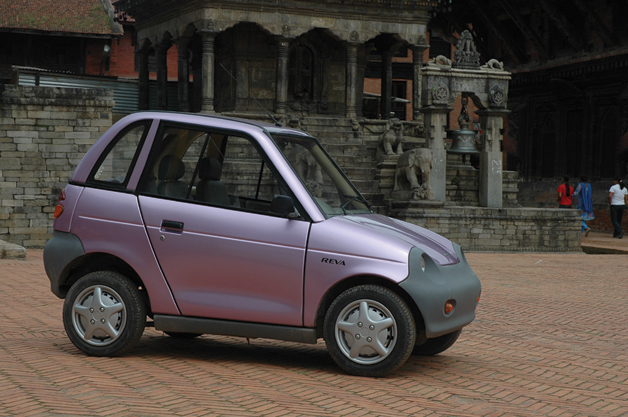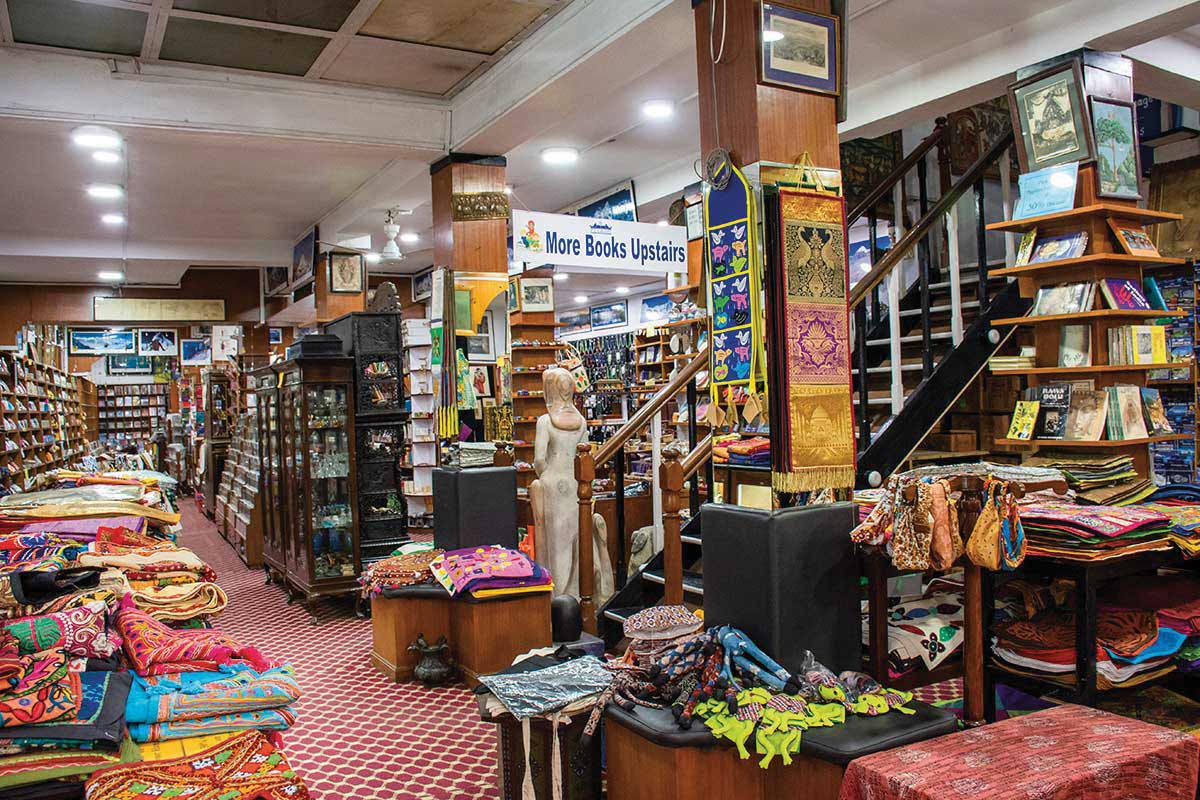
It’s hard not to notice those strange looking REVA cars as they zip around Kathmandu.They were especially conspicuous during the fuel crisis when there were fewer cars on the streets. A REVA easily draws a crowd wherever it goes. Imported into Nepal five years ago by a couple of American entrepreneurs, Adam Friedensohn and Jimron Goff (popularly known as “Jeevan”), these are electric cars that run silently and are easy to charge.
Adam and Jeevan started a solar electrification company “Lotus Energy” in Bhat Bhateni in 1993. Jeevan formerly worked at Apple Computers and had his own electronics service company in Dallas, while Adam was building passive solar homes in the New England area and studying Buddhist Dharma. Both Adam and Jeevan had traveled separately to Nepal around 1990 and fell in love with the friendly people and rich culture. “Fifteen years ago, we decided we wanted to live in Nepal, and with the goal of bringing clean energy technologies to the Nepali people, both of us independently moved to Kathmandu,” says Jeevan who speaks fluent Nepali. On their first encounter one day at Durbar Marg, they realized they were both on the same track, and joined forces to create Lotus Energy to promote solar and renewable energy technologies in Nepal.
“During our stays in Nepal, Jeevan and I had been sadly watching the alarming increase in air pollution from vehicles in Kathmandu, so in addition to solar, we pooled resources with several other Nepali investors in 1995 to form EVCO Pvt. Ltd. which produced a large number of the Safa Tempos running in Nepal,” informs Adam . Later, the Nepal government oddly banned registration of Safa Tempos, while allowing polluting diesel buses and microbuses to flood in. In 1996, Adam had gone to see and drive a prototype of the REVA being designed in California and immediately placed a deposit for the Nepal distributorship. Later in 2001, Adam and Jeevan, along with Adam’s Nepali wife Sapana Shakya, finalized the deal with REVA Electric Car Company in Bangalore, India to distribute REVA cars in Nepal. At that time, ALL electric vehicles enjoyed a special low 10% Customs Duty in Nepal, while Safa Tempos had an even more special low 1% duty (but those were illegal to register so... ??).
The first five REVA electric cars arrived in February 2002, but unfortunately, perhaps due to pressure and fear from other competitors, the Nepal Government froze the cars for several months in Customs and then cruelly and massively increased the Customs Duty to over 130% (including adding other special taxes and VAT). “Unable to pay such a huge unexpected tax, and realizing that Nepali customers would never buy REVA cars at such a high price (over 15 lakhs rupees per car), we were forced to abandon the five REVA cars at a total loss,” laments Jeevan. Customs in Birganj tried to auction the cars several times with no success. Four years later, Jeevan and Adam finally cleared the cars in December 2005. After refurbishing and testing the cars for a year in Kathmandu throughout 2006, all five REVA cars are running perfectly and silently speeding past the long petrol queues in the Valley. Unfortunately, after a whole year of trying to get the REVAs registered, these first five REVAs are still running “ON TEST” and await a Ministry -level decision to get license plate numbers!
If you’ve ever done any cycle trekking around the Kathmandu Valley, you probably know that Godavari, Thankot, Nag Dhunga, Sankhu, Dakshin Kali, Changu Narayan and Nagarkot areas are a hefty climb up from the Valley. However, the REVA cars have been driven several times to these “weekend getaways” with no problems. Recently, the REVA was even test-driven as far as Dhulikhel and Panauti in Kavre and returned to Kathmandu just fine, without any recharging. The REVA is actually designed for only 2 adults and 2 children, but when tested on Kathmandu’s steepest hills, even with 4 adults in the car; it went right up, overtaking other struggling taxis and smoke-spewing motorbikes on the way up as well!
The REVA car uses 8 six-volt batteries (same as the Safa Tempo battery) and a 15 kW DC Motor to travel a range of about 80 km per charge at speeds of up to 70 kmph. It only takes 2-3 hours to recharge this car by plugging into any standard electric 3-pin 15A 220V AC outlet at your own home or office, or even at a friend’s. A typical recharge only uses 3-4 units of electricity, which means only about NRs 30/- to 40/- a day to operate the cars in Kathmandu. That’s cheap! The battery pack lasts about 3 years and costs about NRs 55,000/- to replace, but even so, the REVA is CHEAPER than a motorcycle to operate! “There’s no engine, clutch, gears, or oils or filters to replace. Even the brakes are electronic, so when you stop or go downhill, the motor turns into a generator and recharges the batteries while you’re braking or coasting! A small on-board computer monitors the batteries, energy, on-board charger, and the motor and brakes. Any system malfunction causes the SERVICE light to come on, and the exact error can be seen on any laptop computer,” explains Jeevan.
While driving around, the car is fast and easy to maneuver, and with no gears or clutch, ladies find it extremely easy to drive. Given its small size, parking and squeezing through traffic jams is a breeze. The special composite bumpers and ABS body can absorb minor impacts with no damage (twice the Euro safety standard). You can even hit the ABS body with a hammer and it simply bounces back undamaged. Unlike most new cars, there is an internal steel frame and roll bars that totally protect the passengers. “The only drawback is that this car’s unique looks will definitely attract a big crowd wherever you go,” says Adam. Since it is completely silent, pedestrians in the bazaars or crossings don’t realize you’ve come up behind them so you have to use the “courtesy horn” or keep the custom hi-fi audio system turned up very loud so people know you’re coming!
The current high price of NRs 15,00,000/- (NRs 8,00,000/- of that is tax!) means very few people will buy the car now, but if the Government of Nepal can realize how ideal this car is for Nepal’s situation and promote it by eliminating the high taxes, the car would only cost about NRs 7,00,000/- and many people could afford it. Using Nepal’s own hydro electric power at night (which is wasted down stream every night) and stopping the import of expensive, polluting petroleum-based fossil fuels from India would certainly be a big advantage to Nepal. In surveys, a majority of tourists cited air pollution as THE NUMBER ONE reason NOT to come back to Nepal.
For details: 4418568
Website:www.ecovisions.com.np










